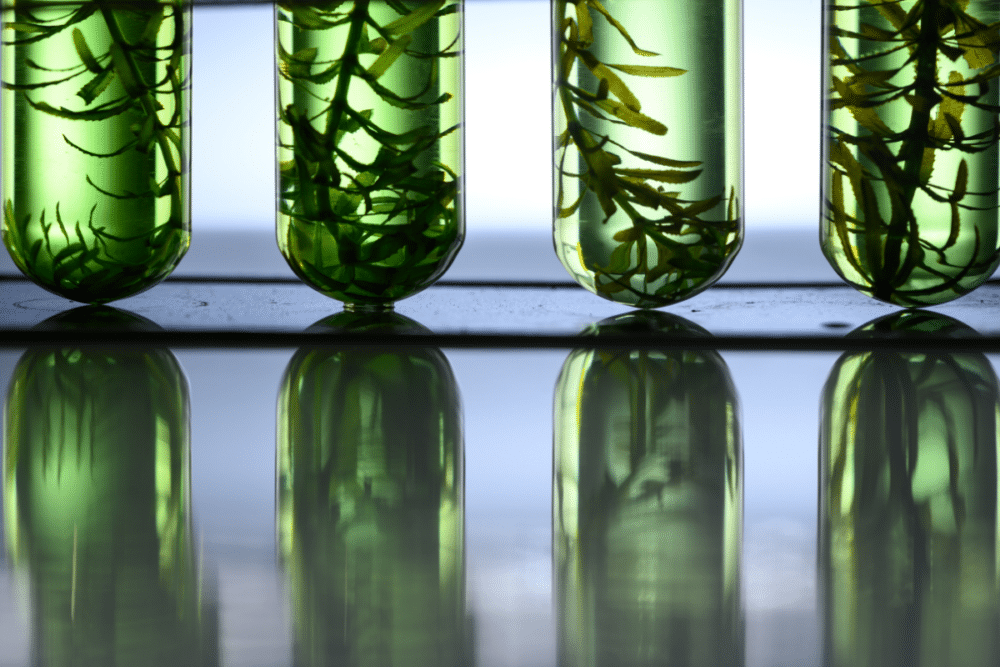The industrial landscape is undergoing a significant transformation. There is an increasing awareness of environmental imperatives and the urgent need for sustainable practices. Recent developments showcase a wave of innovation aimed at mitigating environmental impact across various industrial sectors. We selected 4 breakthroughs that underscore a significant shift towards more sustainable practices.
Supercritical CO₂: A Promising Frontier in Plastic Recycling
A notable advancement in the quest for sustainable material management is the emergence of supercritical carbon dioxide (CO₂) as a groundbreaking “third recycling pathway”.Pioneered by the IPC Technical Centre in France, this innovative method offers a unique approach to purify plastics for high-value reuse, presenting a compelling alternative to traditional mechanical and chemical recycling processes. Unlike mechanical recycling, which has limitations in removing contaminants, and chemical recycling, which alters the polymer’s fundamental structure, supercritical CO₂ focuses on eliminating unwanted substances such as additives, plasticizers, and contaminants without changing the polymer’s molecular makeup. This capability significantly enhances the potential for high-quality reuse, including applications requiring food-grade materials.
The process involves treating mechanically recycled plastic granules within specialized autoclaves where CO₂ is subjected to high temperatures (above 31°C) and pressures (above 74 bars), reaching a supercritical state where it exhibits properties of both a gas and a liquid. In this state, CO₂ acts as a powerful solvent, effectively penetrating the plastic and dissolving targeted contaminants.
This technology is not entirely new; supercritical CO₂ is already employed in industries such as decaffeination and essential oil extraction, demonstrating its established industrial viability. A pilot project in France, supported by Citeo, facilitated initial testing on post-consumer plastics, leading to a crucial partnership between IPC and SFE Process, a manufacturer of supercritical CO₂ equipment. This collaboration culminated in the installation of Europe’s largest industrial-scale pressure vessel designed for treating plastic materials with supercritical CO₂, signifying a major step towards industrial application.
READ MORE
Driving Circularity in Construction: The Case of Gypsum Recycling
The construction industry, a major consumer of raw materials, is also increasingly embracing the principles of the circular economy to minimize its environmental impact. Etex, a prominent player in the construction materials sector, is actively involved in gypsum recycling. At their Mazan quarry in France, the largest open-cast gypsum quarry in the country they aim to recycle plaster waste. This practice significantly reduces the need for extracting virgin gypsum by an impressive 100,000 tonnes per year. This not only conserves natural resources but also extends the operational lifespan of the quarry.
For Vivien Bonnelles, Industrial Director, South East at Etex France BP,
“The more we recycle, the longer the quarry will last, and that’s the goal—creating a circular economy that benefits the environment and our business.”
Furthermore, Etex’s R&D pilot line located in Carpentras has achieved a significant breakthrough with the pioneering development of the world’s first 100% recycled gypsum plasterboard. This innovative product is primarily targeted towards clients undertaking large-scale construction projects who are actively seeking eco-certifications for their buildings. It will first be manufactured in France before being introduced to other markets.
READ MORE
Harnessing Marine Microbes for Greener Industries
Beyond advancements in recycling, the industrial sector is also exploring the vast potential of the natural world for sustainable solutions. Researchers are increasingly turning their attention to the diverse genetic blueprints of marine microbes. The marine microbiome, with its immense and largely undiscovered diversity, holds the key to innovative enzymes that could revolutionize various industrial sectors.
A good example of this potential is the work of Prozomix. This biotech company has successfully identified an enzyme derived from a marine microbe. This enzyme is now being utilized by a pharmaceutical company in the development of a “generic” drug through a more sustainable manufacturing process.
The key advantage of this particular enzyme is its ability to function effectively at low temperatures. This low-temperature activity acts as a shortcut in the drug production process, significantly reducing the need for energy-intensive high-temperature reactions and the use of numerous chemicals, ultimately leading to substantial energy and material savings.
Prozomix’s sampling efforts were undertaken as part of the EU-funded BLUETOOLS project. The BLUETOOLS project employs a sophisticated methodology involving microfluidics, a technology that allows for the precise manipulation of liquids at a microscopic scale. This technique enables the efficient screening of samples for interesting properties within the marine microbes, significantly reducing the consumption of reagents and materials compared to traditional, larger-scale screening methods. The project also utilizes bioinformatics, a field that applies computational tools to analyze biological data, to investigate more complex properties of the microbes, such as potential antitumor or antimicrobial effects.
READ MORE
Algae: Fueling a Sustainable Future for Aviation
The aviation industry, a significant contributor to greenhouse gas emissions, is under increasing pressure to adopt more sustainable practices. Conventional aviation fuels are environmentally damaging, prompting the European Union to implement stringent regulations aimed at achieving climate neutrality by 2050. A key component of this effort is the ReFuelEU Aviation regulation, approved in 2023, which mandates a progressively increasing minimum percentage of sustainable aviation fuels (SAF). Starting with 2% in 2025, this requirement will escalate to 70% by 2050. However, current sustainable aviation fuels face challenges related to high costs and limited production capacity within Europe.
In this context, the production of microalgae-based aviation fuels emerges as a potentially cost-effective pathway for the European aviation industry to embrace SAFs and significantly reduce its environmental footprint. Algae offer several compelling advantages for fuel production. They can be cultivated in saltwater or even wastewater, thereby avoiding competition for freshwater resources and arable land used for food crops.
Furthermore, algae actively absorb CO₂ from the atmosphere during their growth, contributing to carbon capture. They are also remarkably oil-rich and exhibit rapid growth rates compared to traditional oil-producing crops, allowing for quicker harvesting cycles and potentially higher overall production. The European algae biofuel market is anticipated to experience substantial growth in the coming years.
Despite these benefits, a significant hurdle remains: the high cost associated with converting microalgae lipids into aviation fuel.
Algae require specific growth conditions, and the processes involved in extracting and refining their oils are currently energy-intensive. To address this challenge, the SusAlgaeFuel Project was launched, explained Professor Ronald Halim, project coordinator. He stated that the SusAlgaeFuel Project is
“developing approaches to lower the cost of growing and processing algae. This can make the resulting algae fuel cost-competitive with other types of sustainable aviation fuels, and make it available for local production in the EU.”
He hopes this could influence the actual commercialisation in the aviation and anaerobic digestion sectors in Ireland and the EU.
READ MORE
These four examples underscore a significant shift towards more sustainable practices, driven by technological advancements, regulatory pressures, and increasing market demand for environmentally responsible products and processes. This signals a promising trajectory towards a more environmentally conscious and sustainable industrial future, a path we can only hope remains unhindered by global uncertainties.










![Image [Best of 2025] Power Moves in the Energy World](/wp-content/uploads/sites/3/energy-320x213.jpg)